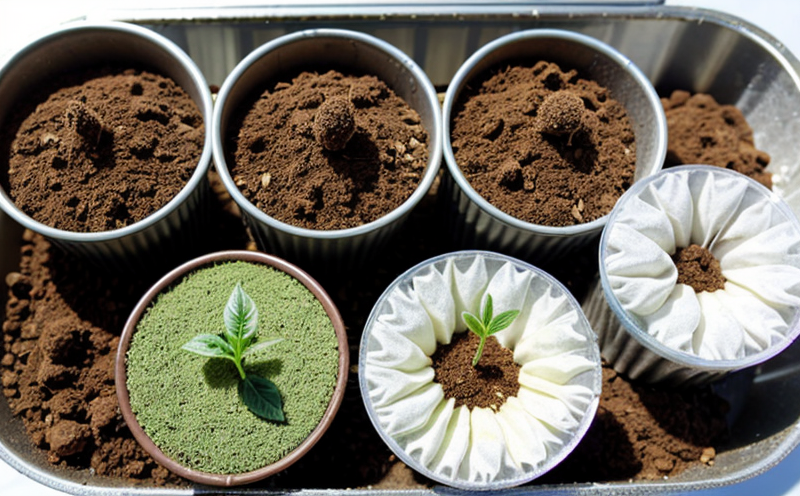Field Emergence Testing in Seeds
The field emergence test is a critical component of seed quality and germination testing. This rigorous procedure evaluates how seeds perform under actual field conditions, which are often more challenging than controlled laboratory settings. The goal is to determine the percentage of seeds that will successfully emerge from soil after being planted in a typical agricultural setting. This information is invaluable for ensuring crop health and yield.
During field emergence testing, seeds are sown into prepared soil under field-like conditions. Factors such as temperature, humidity, light exposure, and soil type mimic real-world scenarios. The test requires meticulous attention to detail, from seed selection and planting depth to monitoring the environment during the growth period. Environmental variables like rainfall patterns and temperature fluctuations can significantly impact seed germination rates.
One of the key advantages of field emergence testing is its ability to predict how seeds will perform in actual agricultural conditions. This allows farmers and researchers to make informed decisions about crop selection, breeding programs, and soil management practices. For instance, a seed that exhibits strong field emergence may be more resistant to environmental stressors like drought or cold snaps.
Field emergence testing is also used extensively in regulatory compliance for seeds imported from different regions. Authorities use this test to ensure that the seeds meet specific standards set by international bodies such as ISO and EN. By adhering to these standards, laboratories can provide accurate data that supports both domestic and international trade.
The process involves several steps: seed preparation, planting in controlled field conditions, monitoring for growth, and recording results. The seeds are typically sown at various depths to assess their adaptability to different soil conditions. Monitoring the emergence rate over time allows for detailed analysis of each batch's performance.
For example, a study conducted by Agricultural Research Service found that certain varieties of maize had significantly higher field emergence rates when planted in deeper soils compared to shallower depths. This insight is crucial for farmers who need to optimize their planting strategies based on soil type and depth.
The use of advanced instrumentation such as automated seed imbibition analyzers can enhance the precision of field emergence testing. These devices help measure water uptake, which is a critical factor in determining germination success. Additionally, statistical methods like ANOVA (Analysis of Variance) are employed to analyze data from multiple trials and ensure reliability.
Understanding the intricacies of field emergence testing can provide significant benefits for businesses involved in agriculture and forestry. Seed quality assurance departments rely heavily on this test to maintain high standards and meet customer expectations. By investing in robust field emergence testing, companies can enhance their reputation as reliable suppliers of top-quality seeds.
Benefits
The benefits of conducting field emergence tests are numerous and far-reaching. Firstly, it offers a realistic assessment of seed viability under actual field conditions, which is essential for optimizing planting strategies and enhancing crop yields. Secondly, this testing method helps in identifying seeds that possess superior resistance to adverse environmental factors such as drought or high temperatures.
Thirdly, the test supports compliance with international standards set by organizations like ISO and EN, thereby facilitating smoother trade between countries. Fourthly, it aids in breeding programs by selecting seed varieties that perform exceptionally well under various field conditions.
Fifthly, field emergence testing provides valuable insights into soil type preferences of different seeds, which can guide farmers towards more sustainable agricultural practices. Sixthly, this test helps minimize risks associated with poor seed quality and ensures customer satisfaction through reliable product offerings.
Why Choose This Test
Selecting the right testing method is crucial for ensuring accurate results in field emergence testing. One reason to choose this particular test over others is its ability to provide a realistic assessment of seed viability under actual field conditions. By simulating real-world scenarios, laboratories can accurately predict how seeds will perform once planted.
Another advantage is the use of advanced instrumentation such as automated seed imbibition analyzers. These tools not only improve precision but also streamline the testing process by reducing manual labor and minimizing human error. Additionally, statistical methods like ANOVA ensure reliability through rigorous data analysis.
The field emergence test also supports compliance with international standards set by organizations such as ISO and EN, making it an essential tool for businesses involved in agriculture and forestry. By adhering to these standards, companies can enhance their reputation as reliable suppliers of top-quality seeds.
Furthermore, this testing method helps minimize risks associated with poor seed quality and ensures customer satisfaction through reliable product offerings. It also aids in breeding programs by selecting seed varieties that perform exceptionally well under various field conditions.
Competitive Advantage and Market Impact
The implementation of robust field emergence testing offers several competitive advantages for companies operating within the agriculture and forestry sectors. By providing accurate data on seed viability, these tests help in making informed decisions about crop selection, breeding programs, and soil management practices.
For instance, a company that invests heavily in field emergence testing can differentiate itself from competitors by offering superior products backed by reliable scientific evidence. This not only enhances the reputation of the brand but also fosters customer loyalty through consistent quality assurance.
The test results can be used to develop new varieties of seeds with improved resistance to environmental stressors such as drought or high temperatures. Such innovations are particularly valuable in today's climate where extreme weather events are becoming more frequent. By focusing on these factors, companies can stay ahead of market trends and meet evolving consumer demands.
Moreover, adherence to international standards set by organizations like ISO and EN ensures smooth trade between countries. This compliance helps eliminate barriers to entry for businesses operating across borders, thereby expanding their market reach.
The field emergence test also supports sustainable agricultural practices by providing valuable insights into soil type preferences of different seeds. Farmers can use this information to optimize planting strategies based on local conditions, leading to increased efficiency and reduced costs.





